Framework for improving the use of science communication
Communicating science and knowledge is challenging. The public is constantly overloaded with information that becomes ever more accessible and travels at an accelerating speed due to the development of digital media.
To support the improvement of the quality of science communication under these circumstances, the RETHINK project has developed an interactive framework. The framework visualizes the digital European science communication ecosystem of today by showing its the main actors and who they communicate with within different discourses.
The framework aims to:
- Provide an overview of the science communication ecosystem
- Raise awareness of the challenges that this ecosystem poses, and
- Pose practice-oriented reflexive questions that can help address these challenges
It can be used by anybody involved in science communication and is based on the project’s research into the digital communication landscape, sensemaking practices, and quality.
If you want to learn more about the insights from the project, you can find more information here.
How to use the framework?
At first glance, the framework depicts the high complexity of the science communication landscape. Underneath it, we have listed practice-oriented reflections, points of attention and conditional factors that are relevant to any type of science communication. Consultation of this list aims to make your communication more reflexive and resilient to the challenges of the complex landscape.
In the top right corner of the framework, you can click your way through different layers of the framework by pressing the button “view”. They will reveal
- Practice-oriented reflections and points of attention relevant to actors within science and policy in specific
- How the landscape changes within different topics or discourses
- Reflections about sense-making, which is at stake in all communicate actions
In addition to the different layers of the framework, we also encourage you to take a look at the different roles that you as a science communicator can take on when participating in the complex landscape.
How to interpret the framework?
When looking at the framework, the turquoise color symbolizes organizational actors whereas the orange color symbolizes individual actors. The lines between the actors represent interactions that can take many forms and vary in scope. The circle in the middle called “public discourse on science” represents the multiple different discourses on scientific topics that science communication contains (this becomes visible when navigating through the framework)
It is important to note that the map doesn’t include all actors, interactions or discourses. The main idea here is to show how the science communication landscape has changed a lot when compared to earlier models where ‘scientists’ and ‘media’ where the dominating actors.
Framework
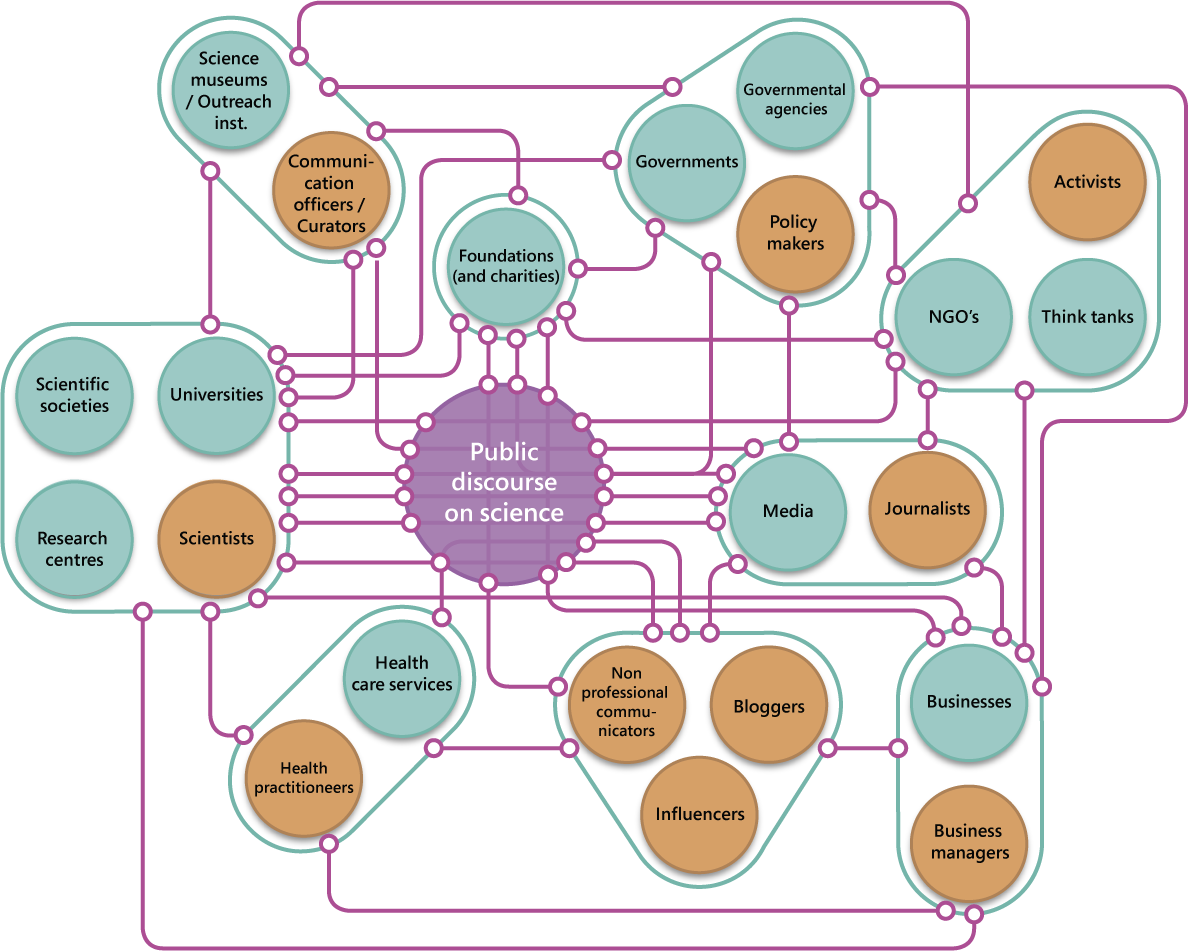
Praxis-oriented reflections:
- What role are you playing and why?
- Who is your target group and how do you make sure to reach it?
- How is your relation to your audience and how does that affect your praxis?
- What do you expect from your audience and how does that affect your praxis?
- Do you consider whether your communication is a one-way or two-way street? How?
- Which platforms do you use and why?
- What is the added value of science communication?
- How could you create better conditions for communicating science (individual, organizational, cultural, etc.) in your professional life?
- There is a tendency to play the role [link to roles] of conduit wanting to inform the public
- There is a tendency to focus on people with a pre-existing interest in science
- The potential of new media settings is not always exploited
- Dialogue and two-way communication is an important quality criteria
- The value of science communication is not self-evident
- Sensemaking practices are heavily dependent on people’s personal situations, emotions and a priori beliefs
- The quality of science communication is context-dependent
- People are overloaded with information both online and offline
Science actors
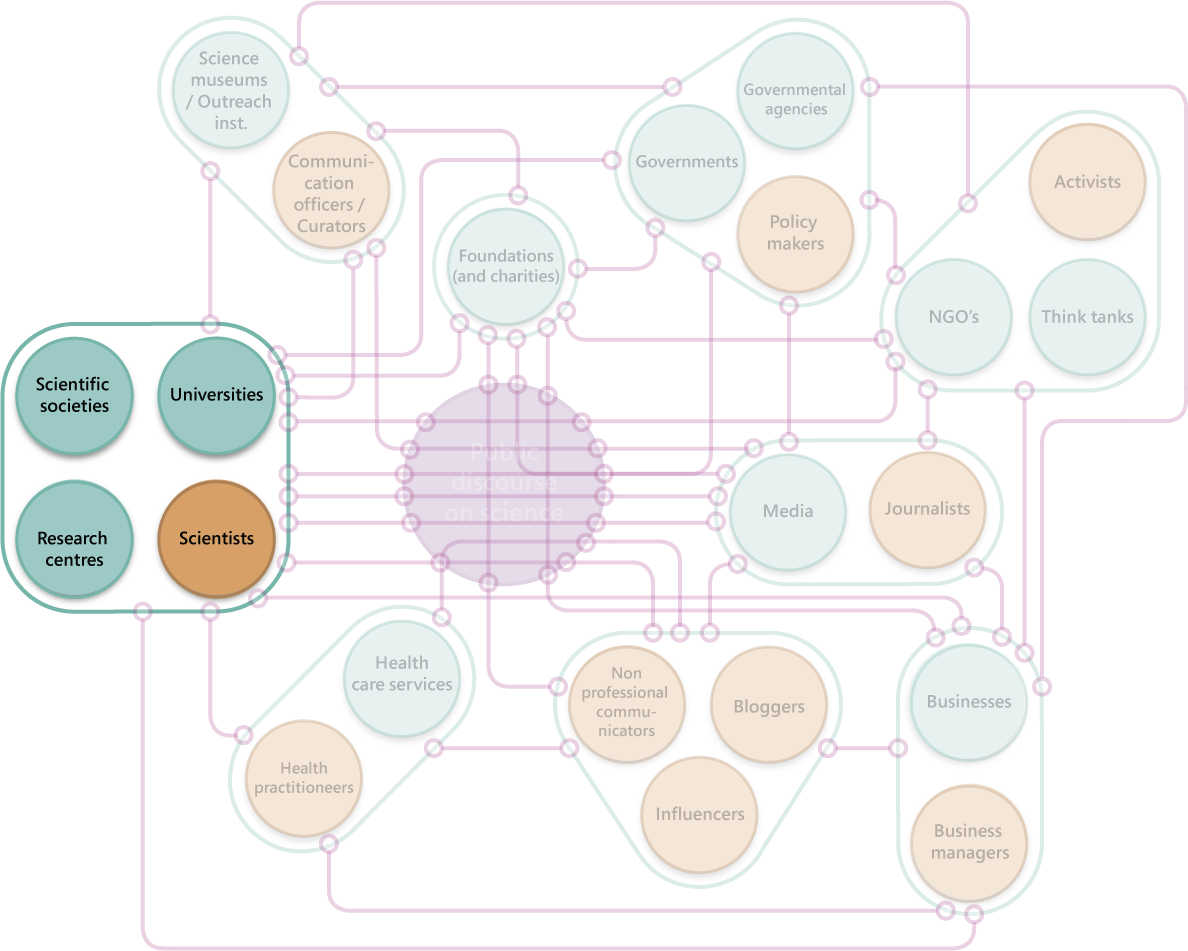
Praxis-oriented reflections:
- What role are you playing and why?
- Who is your target group and how do you make sure to reach it?
- How is your relation to your audience and how does that affect your praxis?
- What do you expect from your audience and how does that affect your praxis?
- Do you consider whether your communication is a one-way or two-way street? How?
- Which platforms do you use and why?
- What is the added value of science communication?
- How could you create better conditions for communicating science (individual, organizational, cultural, etc.) in your professional life?
- There is a tendency to play the role of conduit wanting to inform the public
- There is a tendency to focus on people with a pre-existing interest in science
- The potential of new media settings is not always exploited
- Dialogue and two-way communication is an important quality criteria
Policy actors
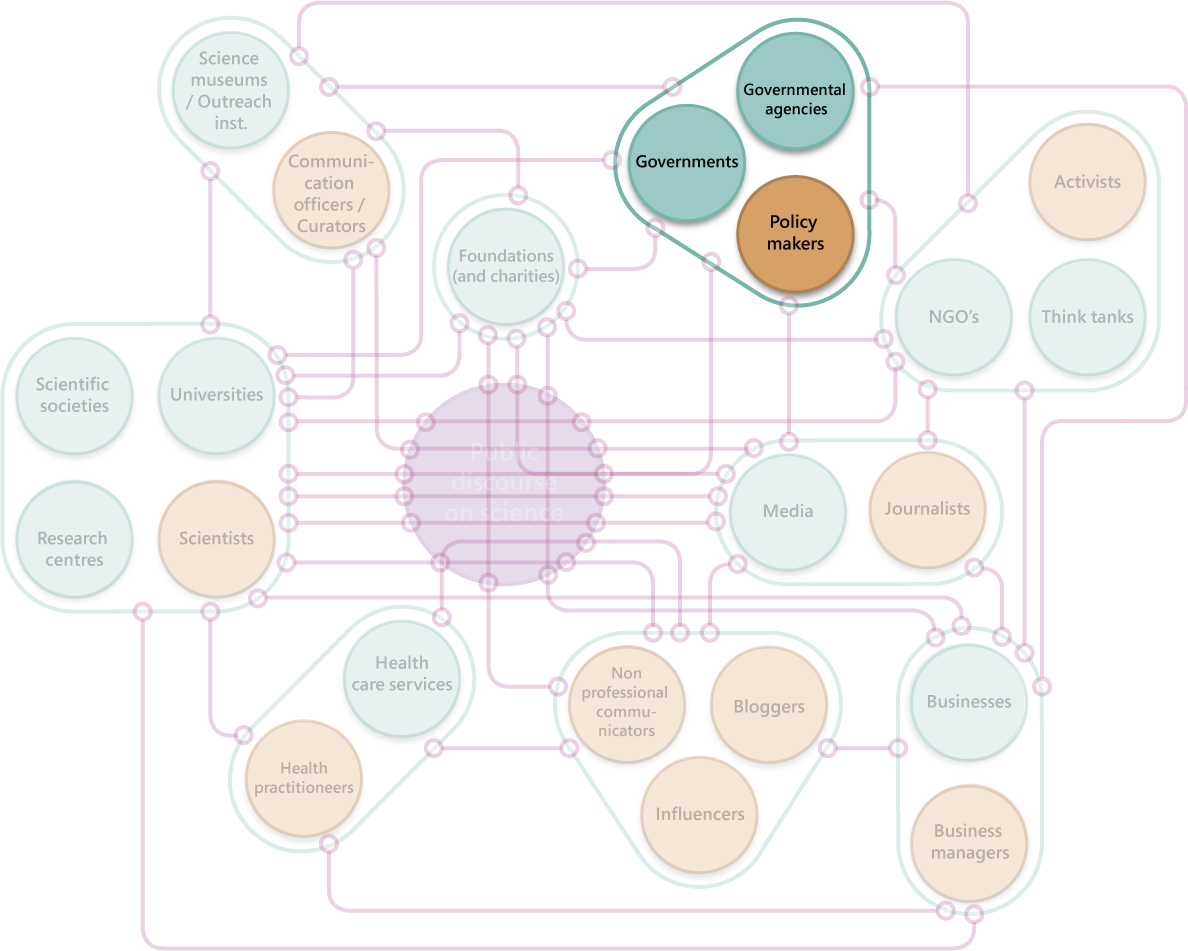
Praxis-oriented reflections:
- What is the added value of science communication?
- How could you create better conditions for online science communication (individual, organizational, cultural, etc.)?
Points of attention
- Science communicators often lack time and resources for communicating science
- Bad online interactions can be deterrent to science communicators and their praxis
- Some science communicators are not familiar with the digital media environment
The climate change discourse
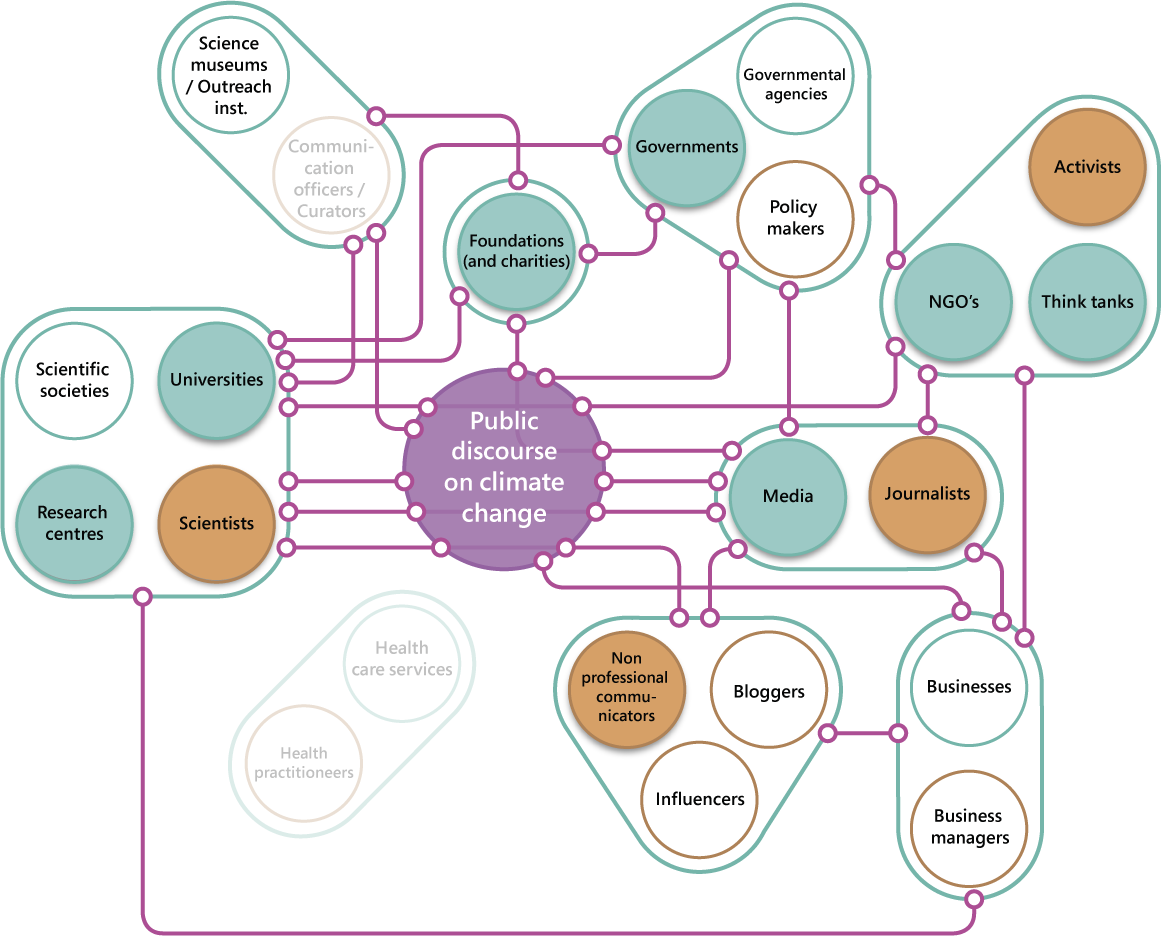
The digital landscape of climate change communication is characterised by a broad and diverse range of actors. Both institutions and individuals, academics and non-academics, traditional gatekeepers (e.g. journalists) and non-traditional ones (e.g. non-professional communicators), share content on climate change to publics.
All these actors communicate about climate change using different platforms to share different types of content. This variety potentially allows Internet users to encounter different opinions and pieces of information about the topic, but at the same time, allows misinformation and misinterpretation of climate change issues to be disseminated online
The artificial intelligence discourse
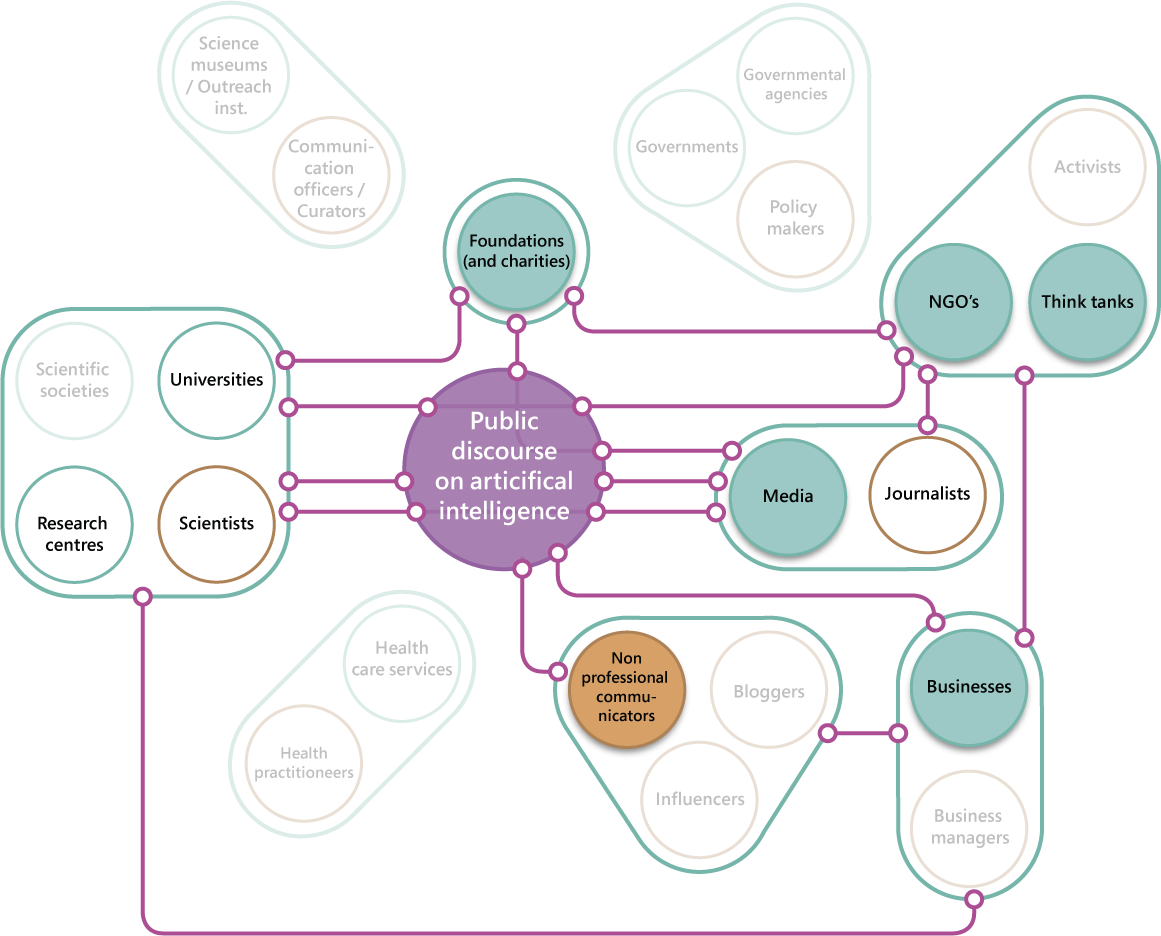
The digital communication landscape featuring artificial intelligence is not as diverse as that of climate change. It is dominated by institutions, and media organisations, businesses, non-professional communicators and support communities are the most common actors.
Unlike in the case of climate change, journalists, entrepreneurs and policy makers are almost absent from this landscape.
The smaller number and diversity of actors in the artificial intelligence landscape could be due to the relative novelty of this topic.
The healthy diets discourse
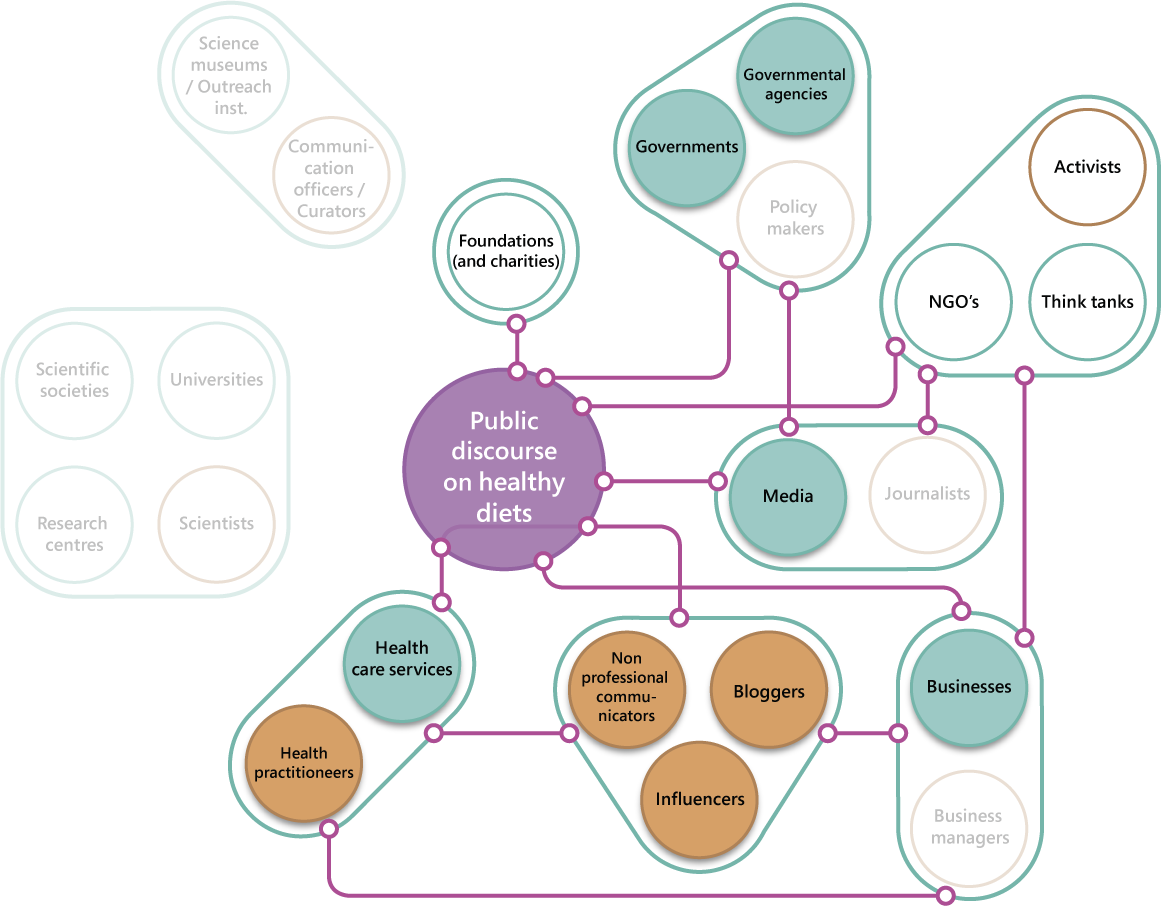
The healthy diets communication landscape is diverse in terms of types of actors and types of content. Both institutions and individuals as well as traditional and non-traditional experts (e.g. health practitioners and non-professional communicators) are common. In this landscape, media organisations and businesses are as common as in the artificial intelligence digital landscape. Among individuals, health practitioners and non-professional communicators have the highest visibility online.
In the online communication about nutrition, experts and non-professional communicators compete to reach online audiences. Both claims to debunk misinformation about healthy diets and show their everyday lives and eating habits as examples to follow.
Sensemaking
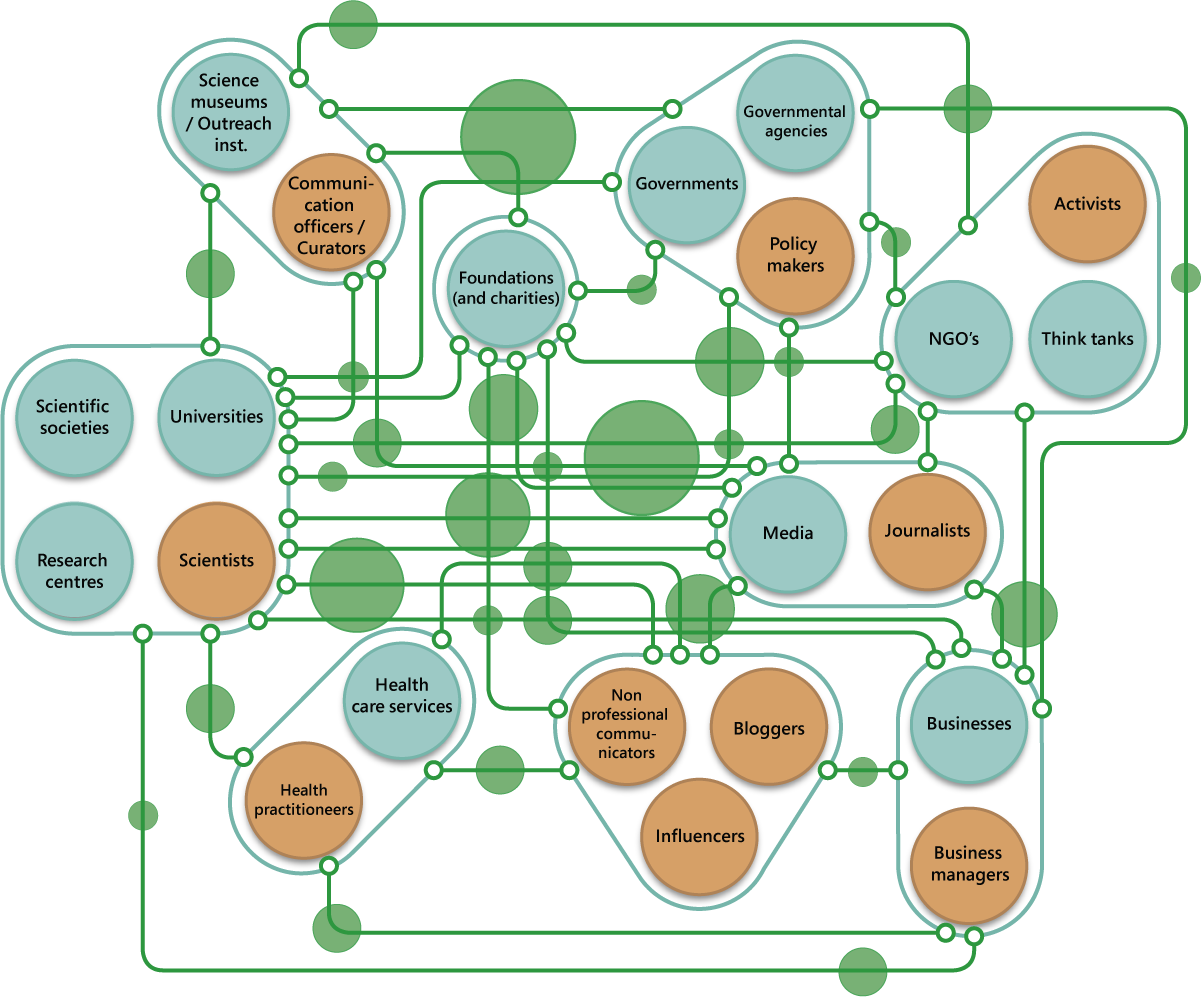
According to sensemaking theory, gaps in knowledge are a human condition, which is why knowledge is never complete. People are constantly making sense trying to bridge the gaps in their knowledge as they are moving through time and space. In order to so, they draw on a variety of sources such as previous experience, expectations, emotions, values and interest (Dervin, 2010). Such sensemaking practices are illustrated by the multiple green dots.
